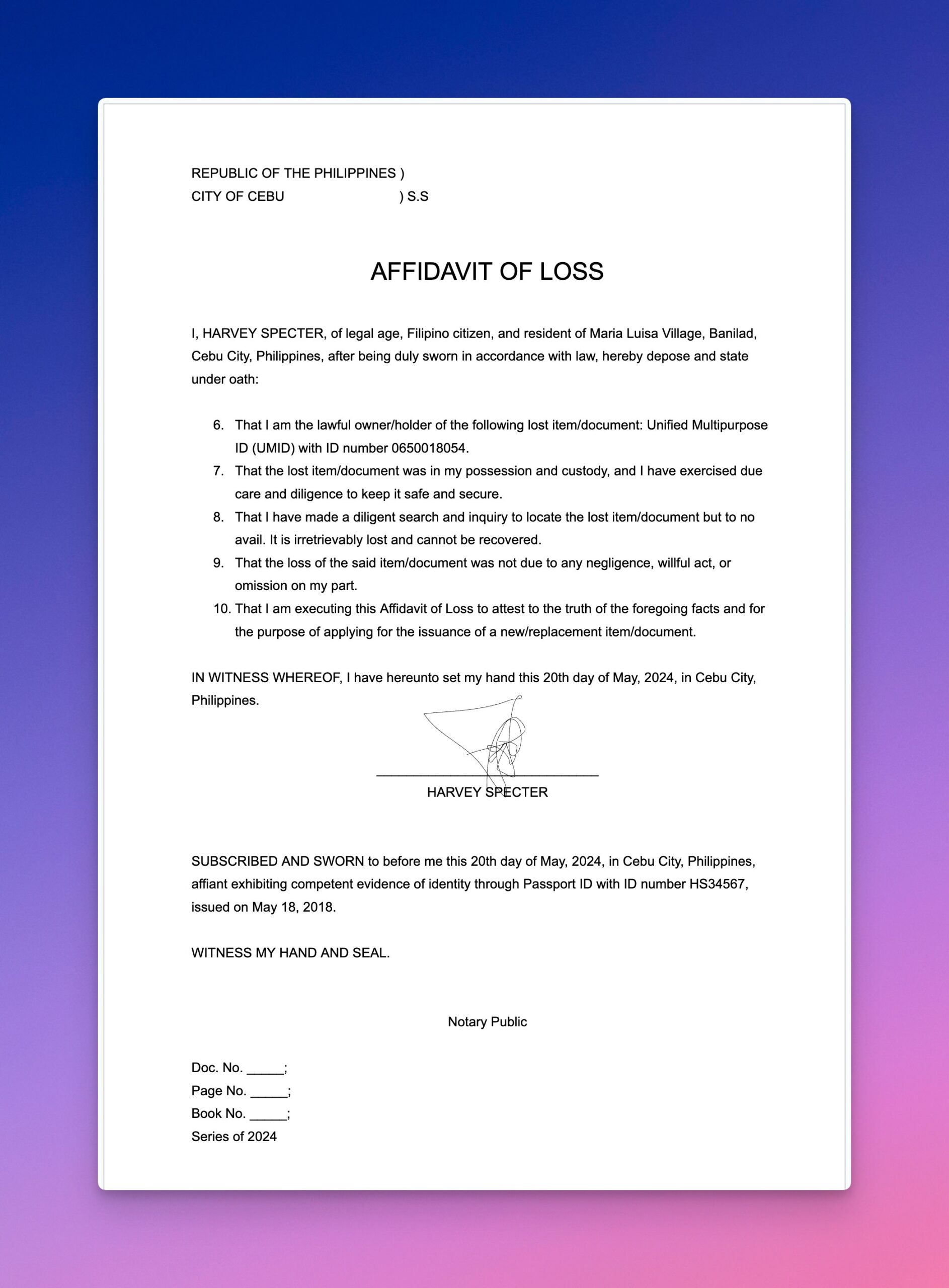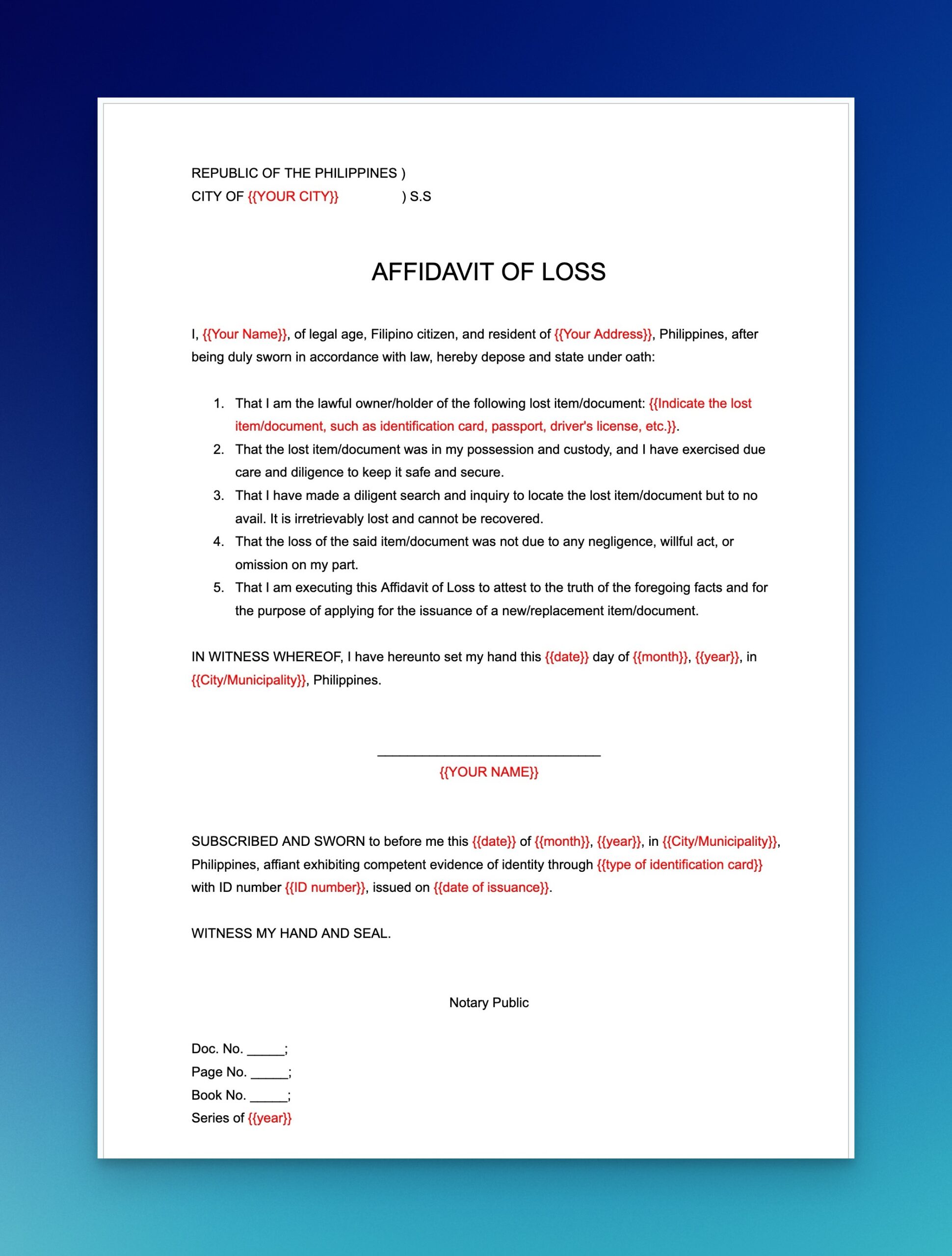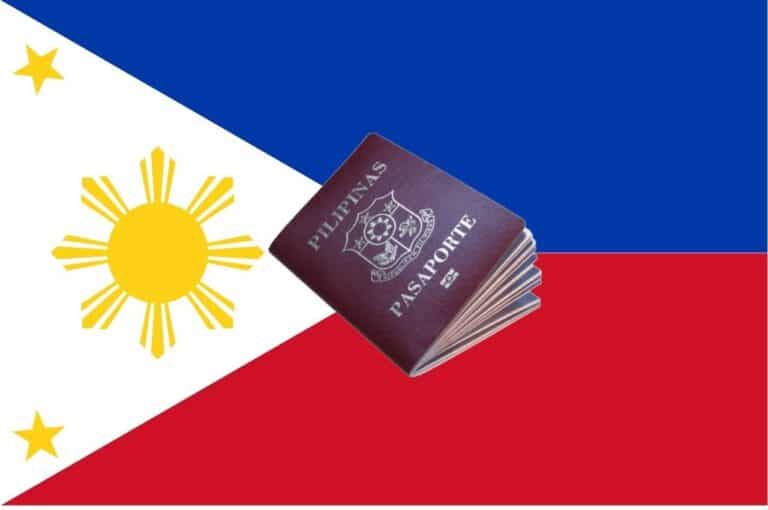Affidavit of Loss Template and Example in the Philippines
Lost your valid ID and feeling clueless about drafting an affidavit of loss? Good news! With our easy-to-follow affidavit of…

Lost your valid ID and feeling clueless about drafting an affidavit of loss? Good news! With our easy-to-follow affidavit of loss template, you can create a legally sound document in no time, ensuring you’re back on track without any legal hiccups.
Thousands have already streamlined this daunting task using our guide, proving it’s not only possible but straightforward. This affidavit of loss template is applicable for any lost ID or document. So keep scrolling kabayan!
Related legal documents:
Affidavit of Loss Template and Example


Outlined below is an affidavit of loss template which you can use to fill in your personal details and have it notarized by a lawyer. Simply change the text in orange and you’ll have your own Affidavit of Loss in no time.
I also created an affidavit of loss template and example in Word, which you can conveniently download. Simply click the button below.
——–
REPUBLIC OF THE PHILIPPINES )
CITY OF {{YOUR CITY}} ) S.S
AFFIDAVIT OF LOSS
I, {{Your Name}}, of legal age, Filipino citizen, and resident of {{Your Address}}, Philippines, after being duly sworn in accordance with law, hereby depose and state under oath:
- That I am the lawful owner/holder of the following lost item/document: {{Indicate the lost item/document, such as identification card, passport, driver’s license, etc.}}.
- That the lost item/document was in my possession and custody, and I have exercised due care and diligence to keep it safe and secure.
- That I have made a diligent search and inquiry to locate the lost item/document but to no avail. It is irretrievably lost and cannot be recovered.
- That the loss of the said item/document was not due to any negligence, willful act, or omission on my part.
- That I am executing this Affidavit of Loss to attest to the truth of the foregoing facts and for the purpose of applying for the issuance of a new/replacement item/document.
IN WITNESS WHEREOF, I have hereunto set my hand this {{date}} day of {{month}}, {{year}}, in {{City/Municipality}}, Philippines.
________________________
{{YOUR NAME}}
SUBSCRIBED AND SWORN to before me this {{date}} of {{month}}, {{year}}, in {{City/Municipality}}, Philippines, affiant exhibiting competent evidence of identity through {{type of identification card}} with ID number {{ID number}}, issued on {{date of issuance}}.
WITNESS MY HAND AND SEAL.
Notary Public
Doc. No. ;
Page No. ;
Book No.;
Series of {{year}}
—–
Step-by-Step Process of an Affidavit of Loss
Processing an affidavit of loss in the Philippines involves several detailed steps to ensure that the document is legally valid and recognized. Here are the exact steps to follow:
1. Draft the Affidavit of Loss
Start by writing the affidavit of loss, which should include:
- Your full name, age, nationality, and current address.
- A detailed description of the lost item (e.g., type of document, identification numbers, when and where it was last seen)
- The circumstances under which the item was lost
- A statement declaring that the loss was not due to negligence or fraudulent purposes
2. Include Essential Information
- Date and place where the affidavit is being made.
- Your contact information for any necessary follow-up.
3. Get the Affidavit Notarized By a Lawyer
- Sign the affidavit in the presence of a lawyer (notary public). To check the legitimacy of the lawyer, you can check his or her name on the Supreme Court’s List of Lawyers
- The lawyer will review the document, witness your signature, and affix their seal, making the document officially notarized.
- Notarization is crucial as it verifies your identity and the authenticity of your signature.
4. Prepare Notarization Fees
- Pay the required notarization fees, which can vary depending on the location and the notary service. The notarization fee ranges between ₱100-300.
5. Photocopy the Notarized Affidavit
- Make several copies of the notarized affidavit. Keep the original for your records and use the copies for official purposes.
6. Use the Affidavit for Official Purposes
- Submit a copy of the notarized affidavit to relevant authorities or institutions that require proof of the loss. This could be banks, government agencies, or other entities depending on what was lost (e.g., passports, driver’s licenses, credit cards).
7. Report to Local Authorities (if applicable)
- For items like government-issued IDs or important documents, it might be necessary to report the loss to local police or barangay authorities. This step can provide additional legal backing for the loss and is sometimes required for the reissuance of certain documents.
8. Follow Up
- If the affidavit of loss is part of a process to obtain a replacement item or document, follow up with the relevant agency or institution to ensure all requirements are met and to check on the status of your application.
By following these steps, you can effectively process an affidavit of loss in the Philippines, ensuring that all legal bases are covered for dealing with lost items and obtaining necessary replacements or conducting other related legal transactions.





